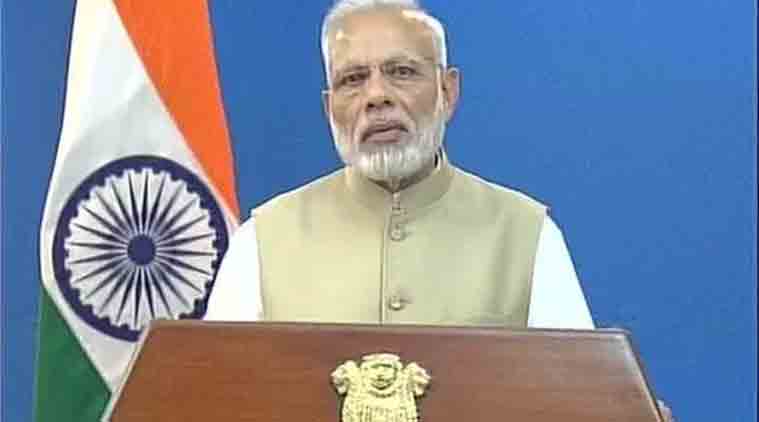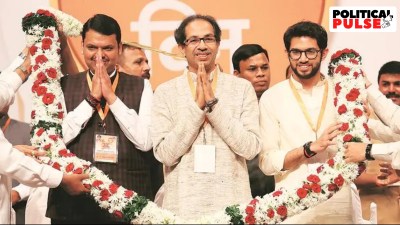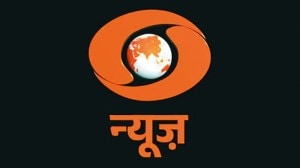- India
- International
The Great Cash Clean-up: Here is everything you need to know
The government is learnt to have been working on this proposal over the last two months.
 ‘Notes hoarded by anti-nationals will be worthless’
‘Notes hoarded by anti-nationals will be worthless’
Making one of his boldest moves since assuming power, Prime Minister Narendra Modi Tuesday announced that Rs 500 and Rs 1,000 notes will be withdrawn from circulation at midnight, saying this decision was taken to break the grip of corruption and black money.
Addressing the nation on television at 8 pm, the Prime Minister said, “The 500 and 1,000 rupee notes hoarded by anti-national and anti-social elements will become just worthless pieces of paper.” This, he said, followed his government’s efforts over the last two-and-half years that brought into the open nearly Rs 1.25 lakh crore black money of the corrupt.
WATCH VIDEO: Rs 500 & Rs 1000 Illegal: Scuffle At An ATM With People Queuing Up To Withdraw Money
Read: Are banks equipped to replace 2,300 crore pieces of Rs 500 and Rs 1,000 notes?
The Rs 500, almost a staple denomination in India today, and the Rs 1,000 notes — that will not be legal tender from Tuesday midnight — account for over 86 per cent of the total Rs 16.42 lakh crore value of bank notes in circulation as on March 31, 2016, according to Reserve Bank of India’s latest annual report.

Incidentally, the decision comes close on the heels of the expiry of the September 30 deadline of the black money disclosure scheme under which income and assets worth Rs 65,250 crore were declared. The government is learnt to have been working on this proposal over the last two months.
People can deposit their Rs 500 and Rs 1,000 notes in their bank accounts till December 30 without any limit. They can withdraw upto Rs 10,000 in the first few days, and Rs 20,000 a week. While all ATMs will be shut on Wednesday, people can exchange up to Rs 4,000 from November 10 to November 24 by tendering equivalent value of Rs 500 and Rs 1,000 notes. This limit will be hiked from November 25 till December 30.
Read: Demonetising Rs 500, 1000 notes a very bold step to fight black money: RBI
The government has already introduced new Rs 500 and Rs 2,000 notes. Fresh Rs 1,000 notes will also be introduced later.
With almost 60 per cent of the economy estimated to be a cash economy, the decision is likely to be quite disruptive in the short-term, says Pronab Sen, former chief statistician of India and Country Director for the International Growth Centre’s India Central Programme. “Current transactions are getting affected. This disruption will have a real economic effect,” he said.
WATCH VIDEO: Rs 500, Rs 1000 Will No Longer Be Legal, Says PM Narendra Modi
Read: Rs 500 and Rs 1000 notes demolished: Here’s what to do with old notes
While the decision will adversely impact sectors which deal with unaccounted money such as real estate, stock market and gems and jewellery, it will also hit the livelihood of neighbourhood vegetable vendors who borrow overnight funds from moneylenders, kirana stores, small traders and even the labour class. The Prime Minister admitted there may be temporary hardships for honest citizens, but exhorted all to seize the moment. “In a country’s history, there come moments when every person feels he too should be part of that moment, that he too should make his contribution to the country’s progress. Now, we again have an opportunity.,” he said.
Read: Amit Shah says ‘fight against blackmoney will continue’
Welcoming the move, President Pranab Mukherjee called upon people not to panic and to follow the government’s guidelines for exchanging the Rs 500 and Rs 1,000 notes. But people started queueing up outside ATMs soon after the announcement. A private banker said, banks foresee a massive logistics problem. “Generally, we replenish at the margin. Each bank has certain amount of cash. Now, we have to replace the entire stock.”
Read: Congress ‘Will support any step against black money’
The utility of the move depends on how effectively the government is able to monitor the exchange of currency. It would serve no purpose if hoarders devise smarter ways to circumvent. “You cannot undermine the ingenuity of the Indian chartered accountant,” said the head of a top private mutual fund.
Experts, however, said the demonetisation decision only affects the stock, and not the flow. “In other words, you have taken care of the black money problem of the past. But what about the future,” said IGC’s Pronab Sen.
The decision to introduce the Rs 2,000 note also flies in the face of the argument that eliminating high denomination notes will put the black money problem to rest. Isn’t the Rs 2,000 note easier to stash, asked a journalist at a press conference after the Prime Minister’s address. “It will be easier to exchange the old Rs 500 and Rs 1,000 notes with a Rs 2,000 note,” replied Economic Affairs Secretary Shaktikanta Das. Moreover, the Reserve Bank of India will monitor and regulate the circulation of the higher denomination currencies, he said.
Read: Govt demonitises Rs 500, 1000 notes: Here is how India Inc reacted
Justifying the doing away of the current series of Rs 500 and Rs 1,000 notes, Das pointed out that between 2011 and 2016, the circulation of all currency notes, from the lowest to the highest denomination, grew about 40 per cent.
“In the same time period, the circulation of Rs 500 denomination and Rs 1000 denomination currency notes increased by 76 per cent and 109 per cent, respectively. The size of Indian economy during this period, however, expanded by only 30 per cent. So, obviously there has been a disproportionately high usage of high denomination currency notes,” he said, adding there were also reports about use of this money for storing unaccounted wealth.”
Even the Prime Minister said in his address that the magnitude of cash in circulation was directly linked to the level of corruption. “The poor have to bear the brunt of this. It has a direct effect on the purchasing power of the poor and the middle class,” Modi said.
RBI Governor Urjit Patel said, “Notably, in recent years, fake Indian currency notes in high denominations — Rs 500 and Rs 1000 notes — has been increasing. The government has also observed the misuse of genuine high-denomination notes in terror-financing and also for holding black money.”
The opportune moment for withdrawal of the old series, Patel said, was when the RBI and the government were ready with the new series of banknotes for an effective replacement. “As of today, and over the past weeks and months, we have ramped up our production and are ready to meet such a requirement in the weeks and days to come,” he said.
Apr 20: Latest News
- 01
- 02
- 03
- 04
- 05






































